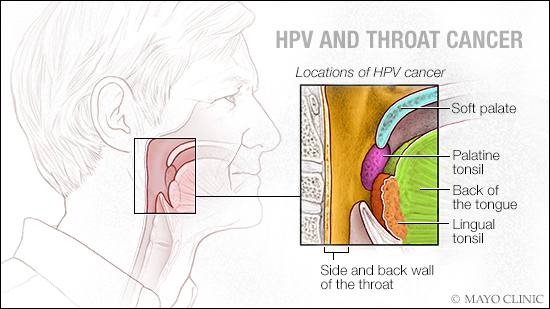-
Medical Innovation
Mayo Clinic Minute: Innovative technology to treat head and neck cancers
In the U.S., HPV is linked to about 70% of throat and mouth cancers. And more than 70% of those cancers are diagnosed in men, according to the Centers for Disease Control and Prevention.
Treatment for throat and mouth cancers, also referred to as oropharyngeal or head and neck cancers, depends on location and stage of the cancer as well as other factors.
Dr. Phillip Pirgousis, a Mayo Clinic head and neck surgeon, says patients now have safer, less invasive surgical treatments for head and neck cancers available to them thanks to innovative technology.
Watch: The Mayo Clinic Minute
Journalists: Broadcast-quality video (1:04) is in the downloads at the end of this post. Please courtesy: "Mayo Clinic News Network." Read the script.
HPV-related cancer cases are increasing in two specific areas in the throat.
"The tonsils in the back of the throat and the lymph node tissue in the back of the tongue," Dr. Pirgousis says.
And cancers in these two locations can be a challenge.

"Many of the challenges are often related to the location of the primary tumor because the throat and voice box area are very difficult to get access to," he says.
That's where innovation with robotics allows for better tumor visualization, better lighting and better outcomes in terms of complete tumor removal.
"We're talking about big, open surgeries versus minimally invasive surgeries where we can access these difficult locations with making facial incisions," he says.
"And having less impact on breathing, speaking, swallowing and communicating. The surgical robot has improved the ability for us to not only completely remove tumors, but to remove them safely," says Dr. Pirgousis.
Transoral robotic surgery
Transoral robotic surgery is a minimally invasive surgical technique that uses a computer system to help guide surgical tools through the mouth. The robotic arms are controlled by a surgeon who sits at a console and manipulates them to perform the surgery. The console gives the surgeon a high-definition, magnified, 3D view of the surgical site. The surgeon leads other team members who assist during the operation.
Treatment options for head and neck cancers
Treatment is based on many factors, including location, stage of cancer, the type of cells involved, your overall health and your personal preference. You may have just one type of treatment, or you may undergo a combination of cancer treatments. Your care team will work with you to determine the best treatment plan for you.
Treatment may include:
- Radiation therapy.
- Surgery to remove cancer that has not spread to other areas.
- Surgery to remove part of your throat, voice box or lymph nodes.
- Chemotherapy.
- Drug therapy.
- Immunotherapy.
Related posts:
- Mayo Clinic Minute: The rise of HPV-related throat cancer.
- Mayo Clinic study suggests improved time efficiency, accuracy with AI-automated head and neck radiotherapy model.
- How Jay got his voice back after cancer







